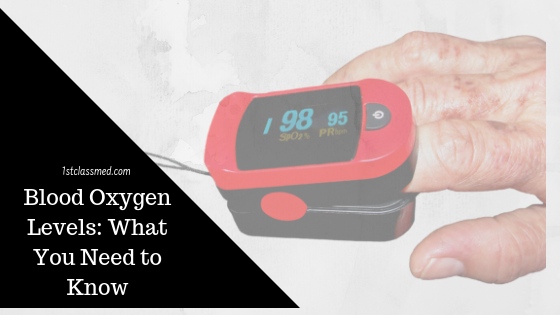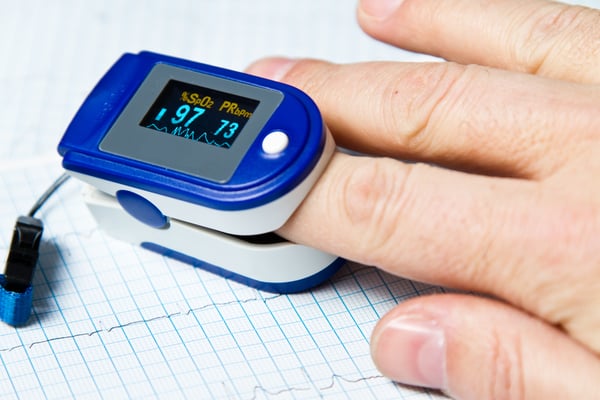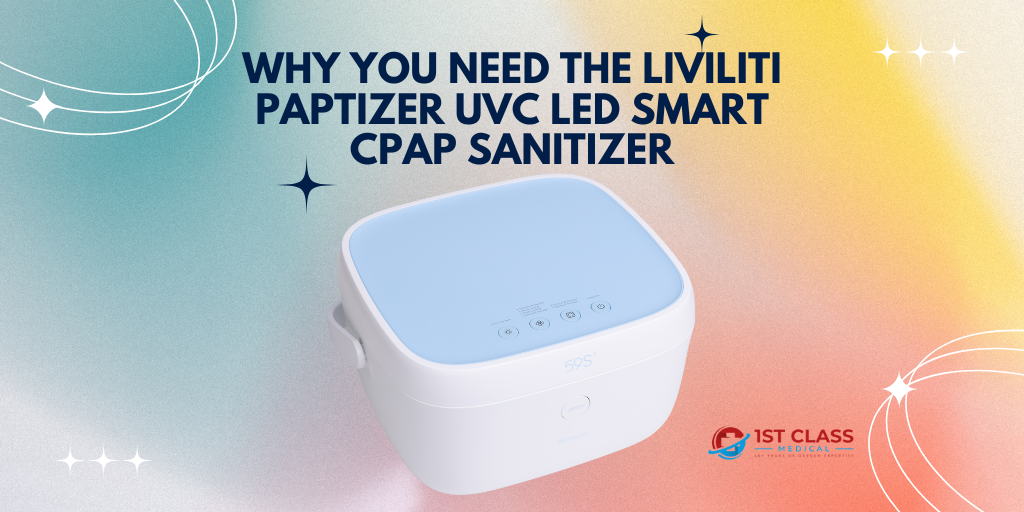
Our oxygen levels are based on the amount of oxygen that gets through our lungs and into our blood stream.
This level is commonly measured by a pulse oximeter, which is a non-invasive tool that often goes on the tip of your finger (or toe) to read the level of oxygen in your blood.
You can also get an arterial blood gas (ABG) blood test, which is more invasive but is very accurate.
Blood oxygen levels are important because it helps determine the state of your current health and if you are getting enough oxygen to the blood.
For those who are healthy, blood oxygen levels don’t not need to be monitored as they are getting enough oxygen into the blood.
Who Needs to Measure O2 Levels
Commonly those who are healthy do not need to check their O2 levels, though your doctor may check in when you are visiting for a checkup just to make sure everything is working how it should.
For those who are healthy, you may also get your levels checked before, during and after any surgeries.
It is common for those with heart or lung conditions to be checked often by their doctor, or told they need to check their own levels often.
For those with conditions such as asthma, heart disease, COPD and cystic fibrosis, monitoring O2 levels often can help keep any eye on the condition and monitor if there is any progression or improvement.
It can also help determine if medications and treatments are helping, or if something more should be done.
Checking levels can help you and your doctor see how effective your current treatment and medications are working, or if there needs to be a change.

How is it Done
There are two different ways to measure the amount of oxygen in the blood, arterial blood gas (ABG) blood test and pulse oximeter.
The arterial blood gas (ABG) blood test is done by drawing blood from an arterial line (also can be from a vein or capillary) to measure how much oxygen and carbon dioxide levels are in the body.
It also checks the bloods pH levels, which helps doctors determine if there is too much acid in the body that is not being expelled through the kidneys.
The procedure is done by cleaning the site of injection and then a medical professional will insert the needle once they find an artery that looks healthy.
It is not a very painful procedure and is often done very quickly with minimal harm to the arm or artery.
A machine (or a lab) will test the sample and analyze the sample to get an accurate test result and get O2 levels.
A pulse oximeter is also a way to measure the amount of oxygen in the blood but is less invasive.
The device is put on the individuals finger, toe or earlobe (depending on the style of the device) and sends (non-harmful) infrared light that reaches the capillaries.
The device then measures how much of the light is reflected off of the oxygen and gives a close estimate as to the levels of oxygen in your blood.
It has a 2% error window in both directions, meaning it can be 2% higher or lower than your actual level.
This is the preferred method for many with less severe conditions, as it is non-invasive, and result are very quick.
It is also handy to continuously check levels at home, and pulse oximeters do not require any medical training to use.
You can buy one at many stores or online and use as you feel (or your doctor recommends) necessary.
The key is to understand how your specific device work, so you don’t analyze the results incorrectly, so read the instructions or have your doctor help you read the results.
The Results
Understanding the results is also very important, as it helps you or your doctor determine if what you are doing is helping or if medication and treatment should be changed.
| Blood pH | Carbon Dioxide | Condition | Cause |
| Less than 7.4 | Low | Metabolic acidosis | Kidney failure, shock, diabetic ketoacidosis |
| Greater than 7.4 | High | Metabolic alkalosis | Chronic vomiting, low blood potassium |
| Less than 7.4 | High | Respiratory acidosis | Lung diseases & complications (i.e. COPD, pneumonia) |
| Greater than 7.4 | Low | Respiratory alkalosis | Anxiety, pain, breathing too quick |
The average number of blood pH is between 7.35 to 7.45, but the lower it is the more acidic the blood becomes, and the higher it is the less acidic the blood becomes.
For the carbon dioxide levels in the blood, if they are high it is commonly linked to lung diseases, adrenal gland complications, hormone disorders, kidney disorders and alkalosis.
If the levels are too low they are linked to Addison’s disease, acidosis, ketoacidosis, shock and kidney disorders.
Normal ABG blood test results are between 80 and 100 millimeters of mercury (mm Hg), a pulse oximeter typically reads 95 to 100 percent on a normal test.
Below normal results read between 80 mm Hg or lower and is below 95 percent on a pulse oximeter.
Above normal results would be higher than 100 mm Hg, which often occurs in those who use supplemental oxygen.
If the oxygen levels are too high, it can only be tested by the ABG blood test, as a pulse oximeter will not read above 100 percent.

Conclusion
Blood levels are a great way for medical professionals to determine what could be wrong with your health, as well as manage medications and treatments.
The tests for it can be non-invasive but do not always bring the most accurate results.
Your results are helpful in determining what could be wrong, or if you are not getting enough oxygen.
If there is too much or too little oxygen in your blood, your doctor may put you on supplemental oxygen or lower your liter per minute (LPM).
Blood oxygen levels help determine your current health state, and can help medical professionals change your plan of care.









